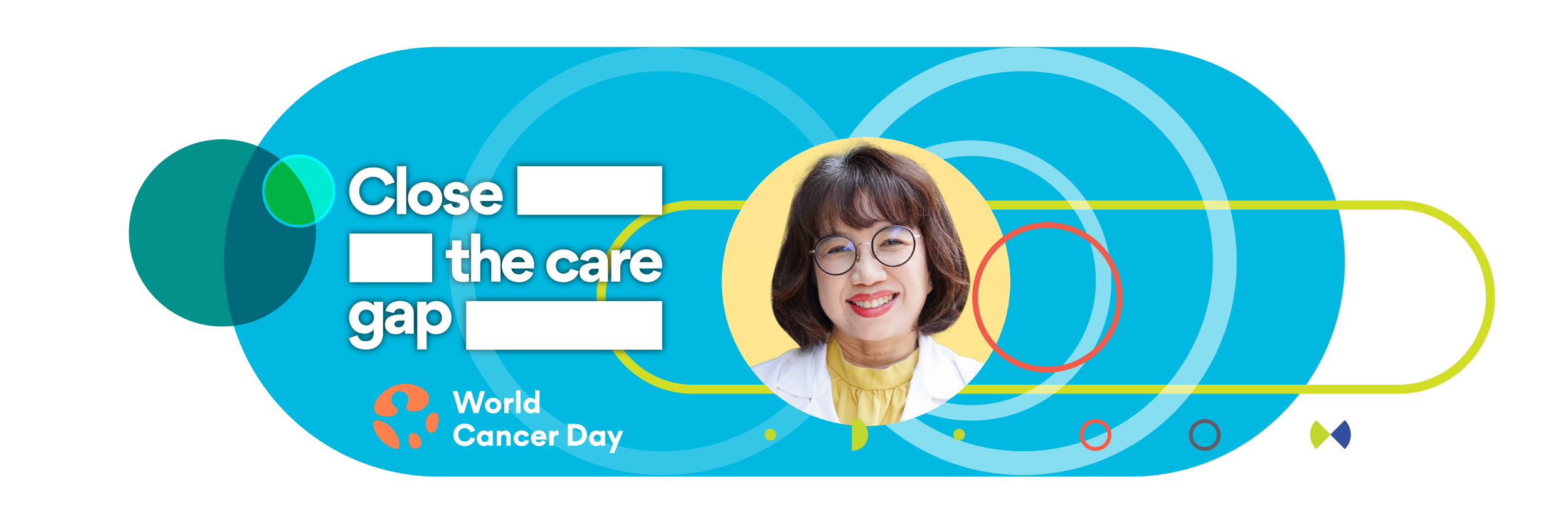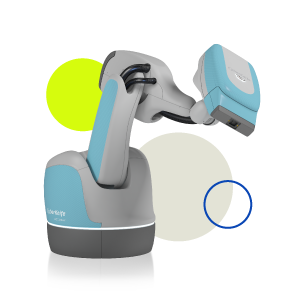The Radiosurgery Society (RSS) is an international, non-profit society consisting of physicians, physicists, and healthcare professionals dedicated to advancing clinical practice and education of stereotactic radiosurgery (SRS), and stereotactic body radiation therapy (SBRT) and advancing therapies.
Not everyone knows that RSS was actually founded in 2002 as the CyberKnife® Society by a consortium of neurosurgeons, radiation oncologists and medical physicists. In 2011 RSS was expanded to include other therapeutic applications.
Each year RSS hosts a scientific meeting to bring together world class healthcare professionals that are interested in the latest developments in SRS and SBRT. While Accuray technologies were highlighted in a number of abstracts at RSS this year, we are taking the opportunity to highlight 2 abstracts on the benefits of SBRT in patients with intermediate to high-risk prostate cancer treated with the CyberKnife® System.
Robotic SBRT for High-risk Prostate Cancer: The Georgetown Experience
Sharma et al[1]., reported on gastrointestinal (GI) and genitourinary (GU) toxicities, as well as biochemical failure with targeted SBRT with the CyberKnife System in high-risk prostate cancer patient at 36 months post treatment. 216 patients with high-risk prostate cancer were treated with fiducial guided SBRT. They received 35-36.25 Gy in 5 fractions of either 6, 7, or 7.25 or 8 Gy using the CyberKnife System. They found SBRT for this patient group had excellent GU and GI toxicity alongside promising 3-year biochemical recurrence-free survival rates. Long-term patient reported outcomes for high-risk prostate cancer receiving SBRT is limited, this abstract helps to demonstrate longer term outcomes 3 years post treatment.
Acute Toxicity Following PSMA-Directed Focal Salvage Robotic SBRT for Local Recurrences Following Prior Robotic Prostate SBRT
We already know from previous research that local recurrences of prostate cancer following radiotherapy often originate from the primary tumor site called the dominant intraprostatic lesion (DIL)[2]. But management of these focal recurrences following prostate SBRT is an area of active clinical investigation.
Wilson et al[2]., reported the short-term toxicity and safety of focal salvage SBRT with PSMA targeting for locally recurrent prostate cancer after SBRT. Seventeen patients were treated with the CyberKnife System using 30-35 Gy in 5 fractions over 1-2 weeks. At 3 months post-treatment SBRT was found to be well tolerated with low incidences of acute GU and GI toxicities.
Further Research Beyond RSS Demonstrates the Effectiveness of Radiotherapy in High-risk Prostate Cancer Patients
Other published and upcoming studies that have shown progress in the management of high-risk prostate cancer include:
- FLAME Trial (focal lesion ablative micro boost in prostate cancer)[3]: A multicenter, phase III randomized control trial. Comparing external beam radiation therapy (EBRT) of 77 Gy in 35 fractions with or without a focal boost up to 95 Gy. All patients had intermediate to high-risk localized prostate cancer although the study was heavily weighed to high-risk patients. 571 patients were included with 287 in the standard arm and 284 in the focal boost arm. The average follow-up was 5 years. It was found that the focal boost to the intraprostatic lesion improved biochemical disease-free survival from 85% in the standard arm to 92% in the focal boost arm. Both late toxicity and health-related quality of life were small and not statistically significant.
- STAMPEDE[4]: To date the STAMPEDE trials have changed the standard of care for men with metastatic prostate cancer. The referenced publication from 2022 is a meta-analysis of 2 RCTs conducted in the STAMPEDE platform randomizing non-metastatic patients between ADT and ADT with abiraterone and prednisolone or ADT and ADT with abiraterone, prednisolone, and enzalutamide. This has been by the addition of docetaxel or abiternone and prednisolone to ADT and radiotherapy to the primary tumor in low burden metastatic disease. The interpretation of their analyses:
- Among men with high-risk non-metastatic prostate cancer, combination therapy is associated with significantly higher rates of metastasis-free survival compared with ADT alone. Abiraterone acetate with prednisolone should be considered a new standard treatment for this population.
- Abiraterone for 2 years should now be considered a standard treatment option in addition to 3-year ADT for newly diagnosed non-metastatic prostate cancer with high-risk features
- In summary, men with high-risk non-metastatic prostate cancer who receive ADT with combination therapy have significantly better metastases-free survival and overall survival than those who receive ADT alone. 2 years of abiraterone and prednisolone added to ADT and, if indicated, radiotherapy should be considered a new standard treatment for non-metastatic prostate cancer with high-risk features.
- SPARC (Stereotactic Prostate Augmented Radiotherapy with CyberKnife)[5]: A single phase 2, prospective study evaluated GU and GI toxicity and quality of life with CyberKnife based SBRT and simultaneous integrated boost in localized unfavorable intermediate to high-risk prostate cancer patients. It has been described that a dose response relationship exists for EBRT in this patient category. However, dose escalation beyond 80 Gy to the prostate gland is associated with increased toxicity. Intensifying dose to the DIL can be an alternative strategy to maximally ablate the area most at risk without exceeding organs at risk constraints. The study treated 20 patients with 36.25 Gy in 5 fractions with a simultaneous boost up to 47.5 Gy. At 30 months follow up there were no late G3 GU or GI toxicities reported and grade 2 GU and GI acute and late toxicities were comparable to other studies. They concluded that SBRT with the CyberKnife System was well tolerated.
- PACE-C[6]: The prostate advances in comparative evidence trials (PACE A and B) have made huge leaps in cancer management in low and intermediate-risk prostate cancer patients. However, the PACE-C trial investigates the clinical outcomes in intermediate- high-risk prostate cancer patients, indicated for 6 months of ADT and randomized to either conventional fractionation (60 Gy in 20 fractions) or SBRT (36.25 Gy in 5 fractions). These results are still to be released but are anticipated to make an impact in the management of high-risk prostate cancer patients.
The role of SBRT in high-risk prostate cancer patients is an area of active clinical study
References:
- https://www.rssevents.org/fsPopup.asp?PosterID=658464&mode=posterInfo
- https://www.rssevents.org/fsPopup.asp?PosterID=658489&mode=posterInfo
- Kerkmeijer LGW, Groen VH, Pos FJ, Haustermans K, Monninkhof EM, Smeenk RJ, Kunze-Busch M, de Boer JCJ, van der Voort van Zijp J, van Vulpen M, Draulans C, van den Bergh L, Isebaert S, van der Heide UA. Focal Boost to the Intraprostatic Tumor in External Beam Radiotherapy for Patients With Localized Prostate Cancer: Results From the FLAME Randomized Phase III Trial. J Clin Oncol. 2021 Mar 1;39(7):787-796. doi: 10.1200/JCO.20.02873. Epub 2021 Jan 20. PMID: 33471548.
- Attard G, Murphy L, Clarke NW, Cross W, Jones RJ, Parker CC, Gillessen S, Cook A, Brawley C, Amos CL, Atako N, Pugh C, Buckner M, Chowdhury S, Malik Z, Russell JM, Gilson C, Rush H, Bowen J, Lydon A, Pedley I, O’Sullivan JM, Birtle A, Gale J, Srihari N, Thomas C, Tanguay J, Wagstaff J, Das P, Gray E, Alzoueb M, Parikh O, Robinson A, Syndikus I, Wylie J, Zarkar A, Thalmann G, de Bono JS, Dearnaley DP, Mason MD, Gilbert D, Langley RE, Millman R, Matheson D, Sydes MR, Brown LC, Parmar MKB, James ND; Systemic Therapy in Advancing or Metastatic Prostate cancer: Evaluation of Drug Efficacy (STAMPEDE) investigators. Abiraterone acetate and prednisolone with or without enzalutamide for high-risk non-metastatic prostate cancer: a meta-analysis of primary results from two randomised controlled phase 3 trials of the STAMPEDE platform protocol. Lancet. 2022 Jan 29;399(10323):447-460. doi: 10.1016/S0140-6736(21)02437-5. Epub 2021 Dec 23. PMID: 34953525; PMCID: PMC8811484.
- Yasar B, Suh YE, Chapman E, Nicholls L, Henderson D, Jones C, Morrison K, Wells E, Henderson J, Meehan C, Sohaib A, Taylor H, Tree A, Van As N. Simultaneous focal boost with stereotactic radiotherapy for localised intermediate to high-risk prostate cancer: Primary outcomes of the SPARC phase II trial. Int J Radiat Oncol Biol Phys. 2024 Mar 16:S0360-3016(24)00425-5. doi: 10.1016/j.ijrobp.2024.03.009. Epub ahead of print. PMID: 38499253.
- https://classic.clinicaltrials.gov/ct2/show/NCT01584258








